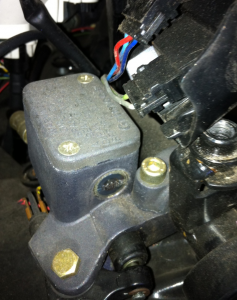One of the most important things you have to do after couple of years of owning a scooter or motorcycle is to change your brake fluid. The special fluid that is used in the brake system degrades gradually by being exposed to the atmospheric water. The brake feeling gets “spongy”, the lever becomes less responsive.
If you follow couple of steps and get some basic precautions changing your brake fluid is actually pretty easy. I recommend having a friend with you to help in this process.
We already talked about one characteristic of the brake fluid (water + brake fluid = bad over time), now another very important one is that it is highly corrosive. If you spill couple of drops to painted surfaces, it might easily peel the paint off and damage the look of your beautiful scooter. I’m not even going to mention that it’s harmful to your skin or eyes if they are exposed to it.
Having couple of old towels or cloth, latex/surgical gloves, and a brake bleeder kit is very handy. If you cannot find a bleeder kit, you can substitute that with a flexible thick IV tube or a small hose dipped into a container of some sort (empty whiskey bottles 😉 )
Why does my scooter have brake fluid?
A fluid is a great mean of transferring pressure from one point to the other. In our brake system when you apply pressure on your brake lever you have an instant reaction on the brake pistons which pushes the brake pads to the brake disc. In most of the bicycles and some scooters this is achieved by wires. Once the speed increases it’s harder to achieve a good pressure to stop the vehicle using wires. Using nature’s ability to transfer massive amounts of pressure using liquids becomes very handy on piston based brake systems.
(If you want to compare a gas to a liquid for pressure transfer think about a bicycle pump. Close the end of the pump with one finger, and push the pump as far as you can, you’ll feel that the gas inside the pump squeezes to a certain point. Well in liquids you cannot do that 😉 )
How to choose which brake fluid, what is DOT3/DOT4/DOT5?
The main difference between those DOT specs is their boiling point. When you brake, you expose your brake system to really high temperatures. Let’s assume for a moment you had water instead of brake fluid in your brake system, it would boil the moment when your brake reaches 100C (212F) which is pretty fast 🙂 Brake fluid’s boiling point is much higher since we are using it in a very hot environment. (400-500F) I’m not going to talk about this topic more but if you are interested and want to get more information you can go to this site.
Your scooter’s manual should have which brake fluid is good for your scooter. Also most of the time brake fluid reservoir cap has this info. If the reservoir is visible it might save you some time to search in your manual 🙂
What the hell is a brake reservoir?
This is a small rectangular shape tank that contains your brake fluid. It usually has a min/max sign. Keep an eye on it and top it when you see it reaching min and below. Most of the time it is very close to the brake levers. Here is a picture from an Aprilia SR50.
In the next part of this article, we will look at a real life case and go through the steps of changing the brake fluid.
Also, read Changing your scooter’s brake fluid – Part 2


